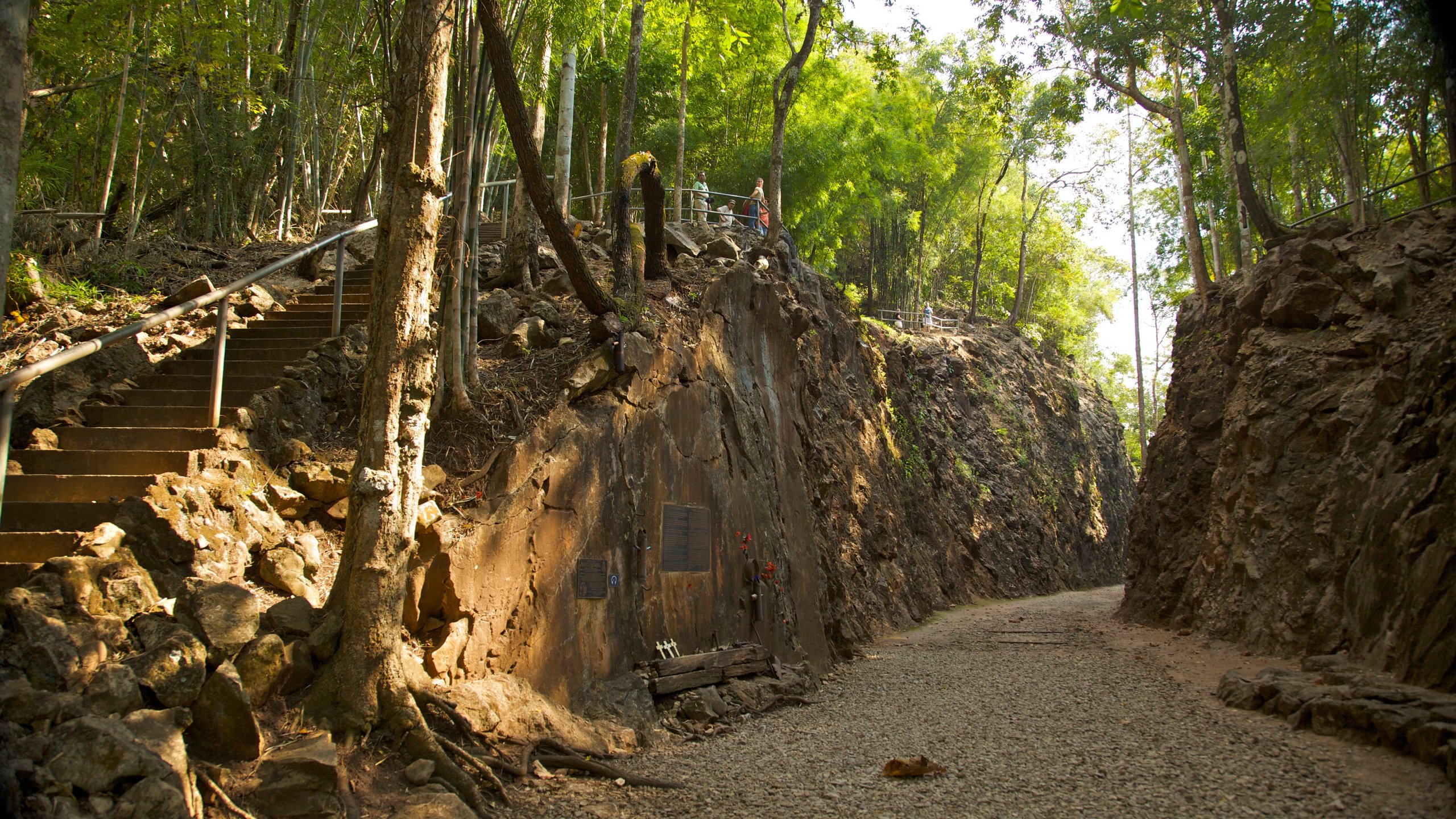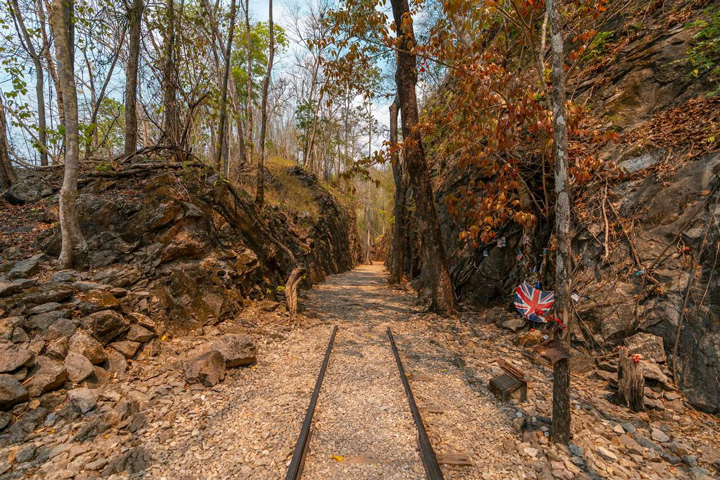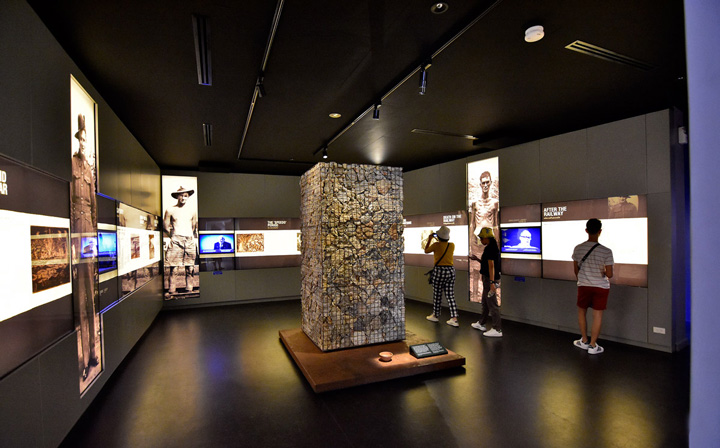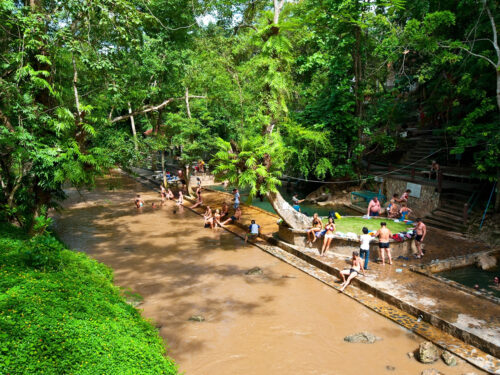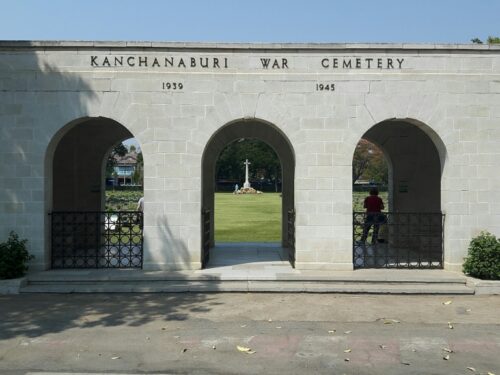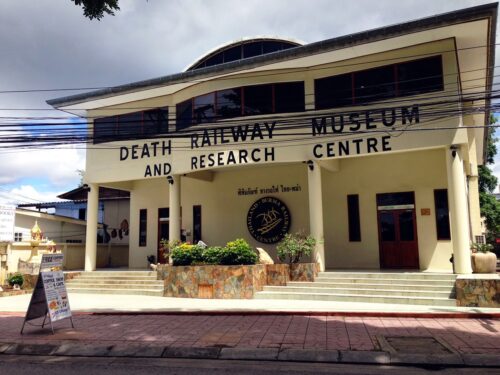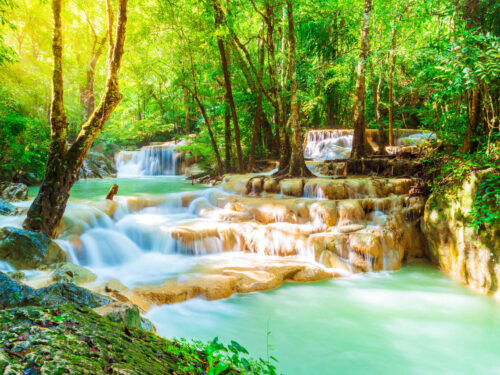Hellfire Pass Memorial Museum
Hellfire Pass, located in Kanchanaburi province, Thailand, holds a haunting and significant place in history as a testament to the suffering endured by thousands during World War II.
Also known as Konyu Cutting, Hellfire Pass is a deep and narrow railway cutting that was constructed by Allied prisoners of war and forced laborers under the brutal regime of the Imperial Japanese Army. This infamous section of the Burma Railway, also called the Death Railway, served as a crucial supply route during the war.
History of Hellfire Pass
The pass earned its name from the haunting conditions in which the prisoners worked. Torchlights were used to illuminate the site during the night, casting an eerie red glow on the laborers, resembling the imagery of hell. The laborers endured harsh conditions, and many prisoners of war lost their lives in the process.
Situated in the Tenasserim Hills, Hellfire Pass presented significant challenges for construction. It featured the largest rock cutting along the entire railway and was located in a remote area, leading to limited access to tools and inadequate care for the workers. Initially, a tunnel was considered for the pass, which would have required two teams working from both ends. However, a cutting was chosen instead as it allowed simultaneous construction at multiple points. This decision resulted in increased effort and a higher death toll among the prisoners of war, who were forced to work 18 hours a day to complete the cutting.
The construction of Hellfire Pass took approximately six weeks, during which Japanese guards mercilessly beat sixty-nine men to death. Countless others succumbed to starvation, cholera, exhaustion, and other hardships. Additionally, a significant number of laborers, particularly Malays, who had been promised better job opportunities, shared the same fate as the prisoners of war. Unfortunately, their deaths were not adequately recorded.
Hellfire Pass Memorial Museum
Hellfire Pass Museum stands as a solemn memorial dedicated to the Australian and Allied Prisoners of War (POWs) who were tragically forced to construct the 415-kilometer railway between Thailand and Burma during World War II. This railway served as a vital supply line for the Japanese forces at the time. The majority of the enslaved POWs consisted of Australians, British, and Dutch individuals, alongside Southeast Asian civilians who were coerced into building the railway, particularly the section known as Chong Khao Khat or Hellfire Pass.
The museum’s exhibitions are divided into three sections.
- The first section presents a comprehensive display detailing the history of Chong Khao Khat and provides information about World War II.
- The second section features a series of movies that offer guidance for visiting the museum, showcase the railway route, and delve into various aspects of the war.
- Lastly, there is a natural walking trail that leads visitors to Chong Khao Khat, which was once part of the death railway. Here, POWs during World War II painstakingly chiseled through solid rock using hammers and taps to create a pass for the railway. Remarkably, remnants of the railway can still be seen along this trail, serving as a tangible reminder of the past.
How to get there
For those who prefer to visit the Hellfire Pass memorial and museum independently, there are organized tours available from Kanchanaburi. However, if you wish to make your own way there, it’s important to note that the museum is situated on land owned by the Royal Thai Army.
To reach Hellfire Pass independently, you can take a bus from Kanchanaburi to Thong Pha Phum. This bus route passes by the site, allowing you to alight at the appropriate stop. From there, you can easily access the museum and explore the historical site at your own pace.
Opening Hours
Hellfire Pass Memorial Museum opens daily from 9 AM to 4 PM.
Entrance Fee
Admission to Hellfire Pass is free of charge, although visitors are encouraged to make voluntary donations.
Tourists’ Reviews
Let’s see what other travelers are saying about Hellfire Pass on TripAdvisor:
Robert B
Hellfire Pass – Refelected in the Movie the Railway Man
Apr 2023 • Couples
We learnt more about Hellfire Pass at the War Graves Museum so decided to do the trip out to the site. I’m glad we did it was a very worthwhile trip, quite emotional when you get down there into the pass. But it was a really hot day and even though the POW’s worked 10’s of hours we managed about 90 mins there and back. You get to see the workings still visible in the rocks.
The Australian government pay the Thai governement for the upkeep of the centre and it is very well done.You have the choice of a number of walks all if which are worthwhile. It would be good to go back in a cooler period.
Simone Luciano
AMAZING
May 2023 • Couples
I would recommend to anyone this experience. Every person must know what happened in the Burma-Thai railway construction. Hellfire pass is the right place to do so.
The museum is super organised and everything is free of charge. You can visit the museum, walk in the hellfire pass, listen to audio guide, watch video and everything for free.
The museum worker ladies are very friendly and super kindly to provide informations to customers.
Simone – Italy
